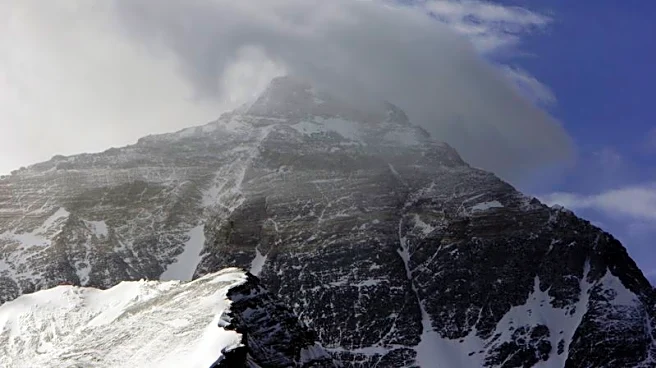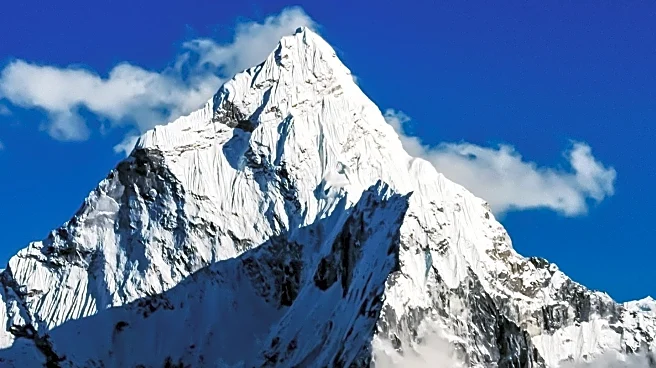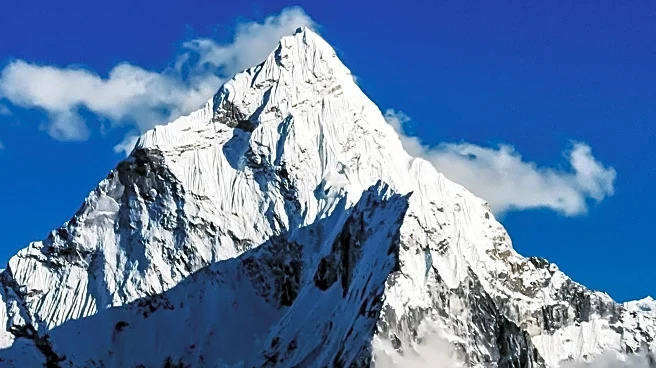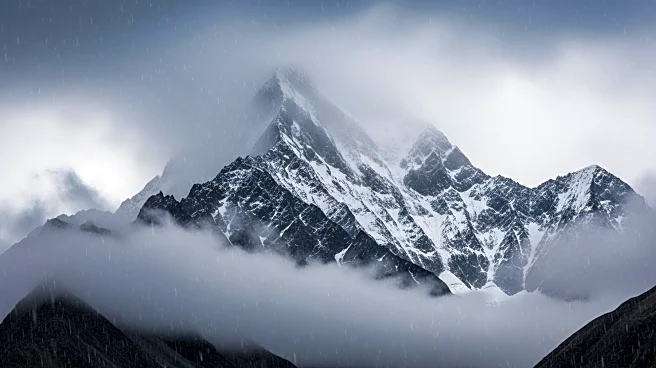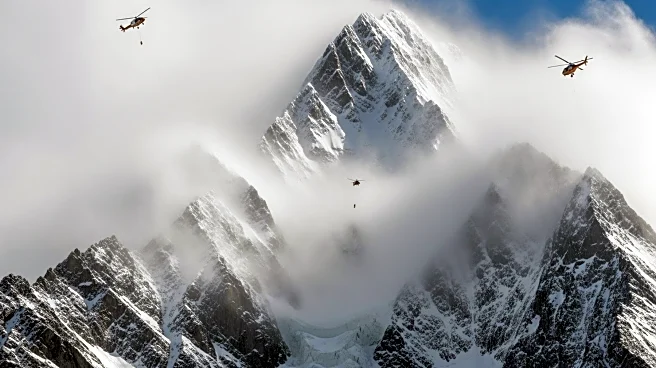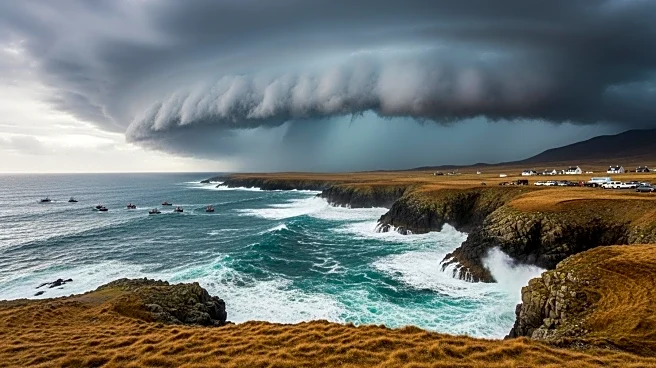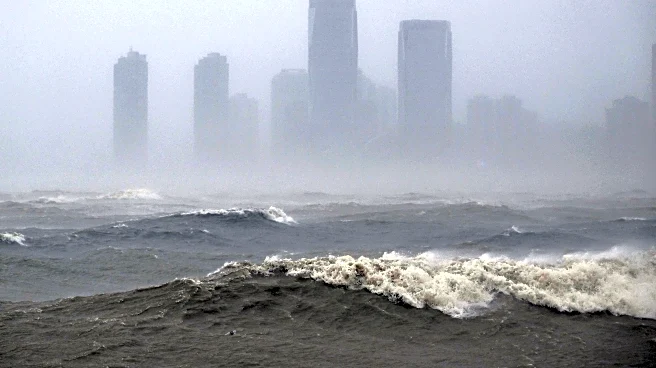What's Happening?
A severe snowstorm has trapped nearly 1,000 people on the eastern slopes of Mount Everest in Tibet, according to Chinese state media. The storm has affected campsites at an altitude of over 4,900 meters, where hundreds of local villagers and rescue workers are currently engaged in clearing snow to provide access to the area. So far, 350 individuals have been guided to safety in the nearby township of Qudang, while contact has been established with 200 hikers still on the mountain. The snowstorm began on Friday evening and intensified, catching many hikers off guard during China's Golden Week, a peak tourism period. Among those affected was Geshuang Chen, a 29-year-old outdoor enthusiast, who had to abandon her trek to the Cho Oyu Base Camp due to the unexpected blizzard.
Why It's Important?
The snowstorm on Mount Everest highlights the unpredictable and dangerous conditions that can arise in high-altitude regions, posing significant risks to climbers and hikers. The incident underscores the challenges faced by rescue operations in remote and harsh environments, where rapid weather changes can complicate efforts. The timing of the storm during Golden Week, a major holiday in China, has amplified its impact, as many tourists flock to the region during this period. The situation also raises concerns about the safety measures and preparedness of climbers and local authorities in dealing with such extreme weather events.
What's Next?
Rescue operations are expected to continue as authorities work to ensure the safety of those still trapped on the mountain. The focus will be on clearing access routes and providing necessary aid to those affected. The incident may prompt a review of safety protocols and emergency preparedness for climbers and tourists visiting high-altitude regions during peak seasons. Additionally, there may be increased scrutiny on the environmental and logistical challenges posed by tourism in the Himalayas, potentially leading to new regulations or guidelines to enhance safety.



